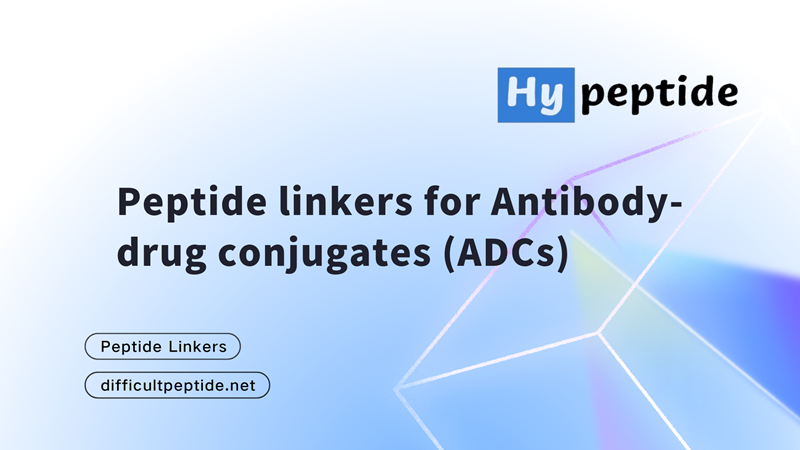
Peptide linkers for Antibody-drug conjugates (ADCs)
Antibody-drug conjugates (ADCs) are a type of targeted cancer therapy that combines the specificity of monoclonal antibodies with the cytotoxic effects of drugs. Peptide linkers play a crucial role in ADC design, as they connect the antibody and the cytotoxic payload, facilitating controlled release of the drug within the target cells. The choice of linker can impact stability, drug release kinetics, and overall efficacy of the ADC. The choice of a specific linker depends on factors such as the pharmacokinetics of the ADC, the desired release mechanism, and the characteristics of the drug payload. It’s crucial to balance stability in circulation with efficient drug release at the target site to maximize the therapeutic effect of the ADC. Additionally, advancements in linker technology continue to contribute to the development of novel and improved ADCs for cancer therapy.
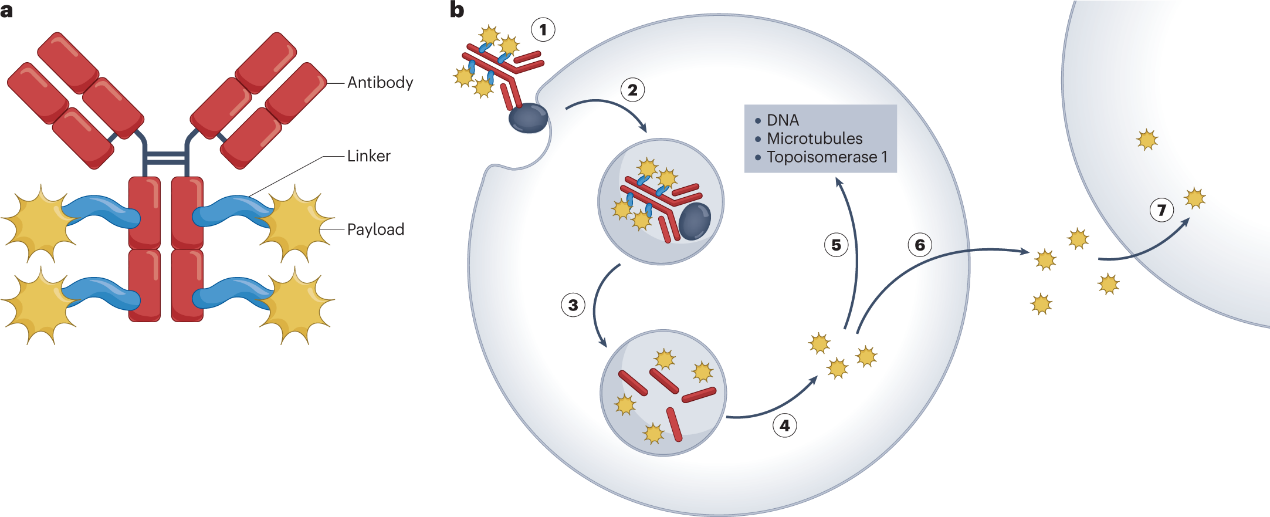
The advantage Of Peptide Linker
1. Biological Compatibility
Peptide linkers are composed of natural amino acids, which are biocompatible and less likely to induce an immune response. This can contribute to the overall safety profile of the ADC.
2. Specificity and Selectivity
Peptide linkers can be designed to incorporate specific cleavage sites for proteases that are overexpressed in the target cells. This allows for selective drug release within the tumor microenvironment, enhancing the therapeutic window.
3. Stability in Circulation
Peptide linkers can be engineered for stability in the bloodstream, minimizing premature drug release during circulation. This stability is crucial for maintaining the integrity of the ADC and preventing off-target effects.
4. Tunable Pharmacokinetics
The properties of peptide linkers, such as their size and hydrophilicity, can be fine-tuned to influence the pharmacokinetics of the ADC. This tunability allows for optimization of drug delivery and distribution in vivo.
5. Ease of Synthesis
Peptide synthesis techniques are well-established, making it relatively straightforward to design and produce peptide linkers. This ease of synthesis contributes to the scalability and cost-effectiveness of ADC manufacturing.
6. pH Sensitivity
Some peptide linkers can be designed to be pH-sensitive, allowing for drug release in the acidic environment of endosomes or lysosomes within target cells. This pH responsiveness enhances the specificity of drug delivery to cancer cells.
7. Multifunctionality
Peptide linkers can be engineered to have multiple functions, such as facilitating site-specific conjugation, improving solubility, or enhancing overall stability. This versatility contributes to the design of ADCs with optimized properties.
8. Well-Characterized Cleavage Mechanisms:
Proteolytic cleavage of peptide linkers by cellular proteases is a well-characterized biological process. This predictability allows for a better understanding of the drug release mechanism and facilitates rational design of ADCs.
Peptide linkers Table:
| Product Name | Structure | M.W. | Purity |
| Fmoc-val-cit-PAB-OH |  | 601.7 | 96% |
| Boc-Val-Cit-PAB |  | 644.7 | 98% |
| MC -Val-Cit |  | 453.5 | 98% |
| MC-Val-Cit-PAB-Gly | 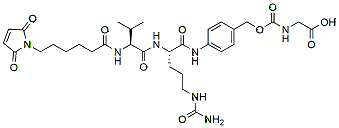 | 673.7 | 95% |
| Alkyne-Val-Cit-PAB-OH |  | 473.6 | 98% |
| SPDP-Val-Cit-PAB-OH |  | 576.7 | 98% |
| Fmoc-PEG2-Val-Cit-PAB-OH |  | 760.9 | 95% |
| NH2-PEG3-Val-Cit-PAB-OH |  | 82.7 | 95% |
| Mal-PEG2-Val-Cit-PAB-OH | 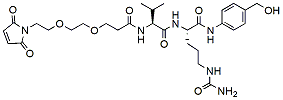 | 618.7 | 95% |
| Mal-Amide-PEG4-Val-Cit-PAB-OH |  | 777.9 | 95% |
| Azido-PEG3-Val-Cit-PAB-OH |  | 608.7 | 96% |
| Azido-PEG4-Val-Ala-PAB |  | 566.7 | 95% |
| MC-Val-Ala-OH |  | 381.4 | 95% |
| Mal-PEG4-Val-Ala-PAB |  | 620.7 | 95% |
| Boc-PEG4-Val-Ala-PAB |  | 640.8 | 95% |
| Fmoc-PEG4-Val-Ala-PAB |  | 762.9 | 95% |
| Mal-amido-PEG8-val-gly-PAB-OH |  | 854.0 | 95%/td> |
| Fmoc-Gly-Gly-Phe-Gly-OH |  | 558.6 | 95% |
| Gly-Gly-Phe-Gly |  | 336.4 | 95% |
| Mal-Gly-Gly-L-Phe-N-[(carboxymethoxy)methyl]Glycinamide |  | 616.6 | 95% |
| Mal-PEG8-Gly-Gly-L-Phe-N-[(carboxymethoxy)methyl]Glycinamide |  | 927.0 | 95% |
| MC-Gly-Gly-Phe-Gly |  | 529.6 | 98% |
| NH2-Glu-Gly-Cit-PAB-OH | 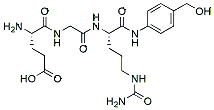 | 466.5 | 95% |
| Fmoc-PEG4-Glu-Gly-Cit-PAB-OH |  | 935.43 | 95% |
| NH2-Sar10-COOH |  | 728.81 | 98% |
| Fmoc-NH2-Sar10-COOH |  | 951.05 | 98% |
Leave a Reply